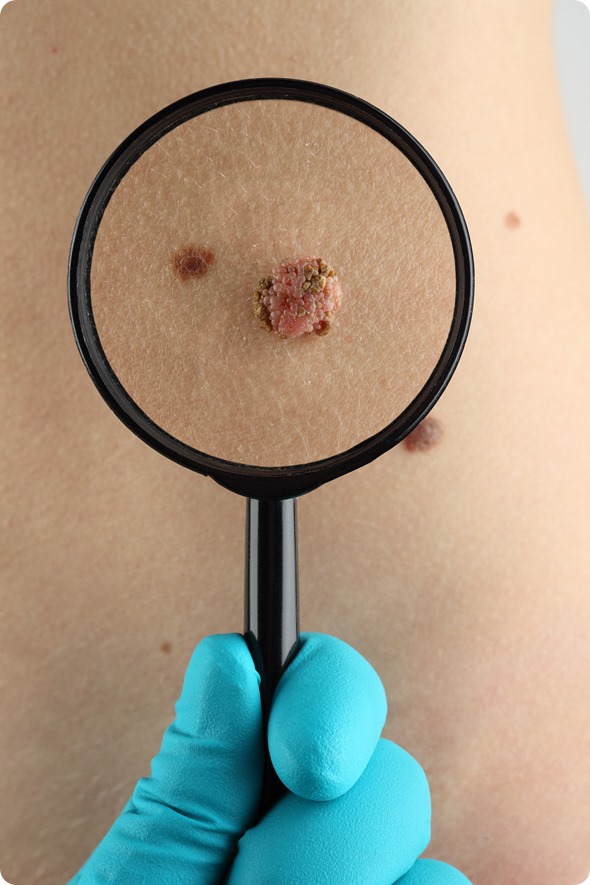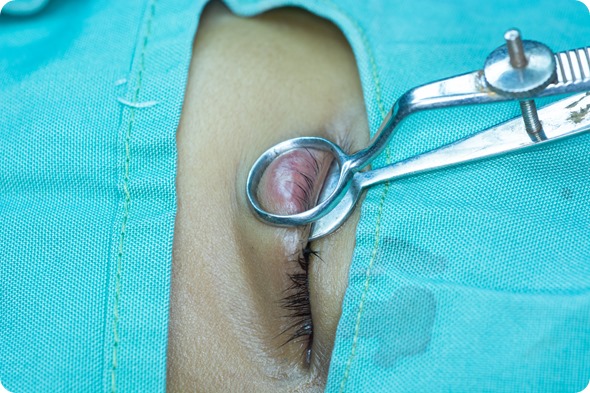Curettage is the term used to describe surgical scraping, which may be used to clean a body cavity of foreign matter, to remove diseased tissue such as tumors or growths or to obtain a biopsy that can be used for diagnosis. It involves the use of a small, spoon-shaped tool with a very sharp edge called a curette.
In dermatology, a procedure called curettage and cautery (a type of electrosurgery) is commonly used to scrape away skin lesions. Examples of the lesions it is used to treat include the following:
- Benign lesions such as warts, spider nevi, skin tags, seborrheic keratoses, and angiomas
- Premalignant skin lesions called actinic keratoses
- Cancerous skin conditions such as basal cell carcinoma and cutaneous squamous cell carcinoma
Curettage and cautery is suitable for removing skin tissue that is softer than the skin surrounding it. The procedure is not usually suitable for treating basal cell carcinoma that is deep, large, or recurring. Lesions where the disease margins are not well defined are also not usually suitable for this treatment.

(c) 8th Creator / Shutterstock.com
The procedure
A local anesthetic is injected into the skin area that surrounds the lesion, to make the skin numb so that no pain is felt while the lesion is removed. The surface of the wound is then cauterized using a pencil-like metal instrument or needle to apply a high-frequency electric current to the area. This prevents bleeding and also removes any remaining unwanted tissue.
A chemical called aluminium chloride hexahydrate may also be used to stop bleeding; it coagulates the blood and seals small blood vessels. A dressing is then applied and the patient is given instructions on how to care for the wound. The lesion is sent to a laboratory for analysis.

(c) ARZTSAMUI / Shutterstock.com
Aftercare
The wound may be sore for several hours after the procedure, once the anesthetic has worn off. Patients are advised to follow the below instructions:
- Keep the dressing on for 24 hours or as advised by the dermatologist
- Avoid stretching or using the wound area
- Take pain killers, as advised
- If the wound bleeds, press on it with a towel for 20 minutes and seek medical attention if the wound is still bleeding after this time
- Keep the wound dry for 48 hours, after which it can be gently washed and dried
- Seek medical attention if the wound reddens or becomes very painful
The wound generally takes two to three weeks to heal. It may be red and raised at first, but the size and redness usually reduce over several months.
Risks
As with all surgical procedures, there is a risk of infection with curretage and cautery. Antibiotics are not usually prescribed and patients are advised what to do if the wound becomes infected. Examples of other potential risks include the following:
- Nerve damage (temporary or permanent) as a result of excising tissue from a skin area with an extensive nerve network
- Subcutaneous bleeding that may cause a hematoma and require reopening and draining of the wound
- Reopening of the wound, which may increase the risk of infection and scarring
Scars
Curettage and cautery of a skin lesion always leaves some degree of scarring as it is not possible to curette the skin without this happening. The lesion will have to be treated by the dermatologist to ensure scarring is kept to a minimum. Scars are generally round, flat, slightly depressed, white and similar in size to the original lesion.
Some patients have an abnormal response to the skin healing which may cause scars to be larger or more raised than would usually be expected. This is referred to as keloid or hypertrophic scarring and it is more likely to occur when lesions are removed from the upper back or chest or if the patient has a family history of this type of scarring. These scars can be treated, but thickened skin may remain permanently.
Further Reading